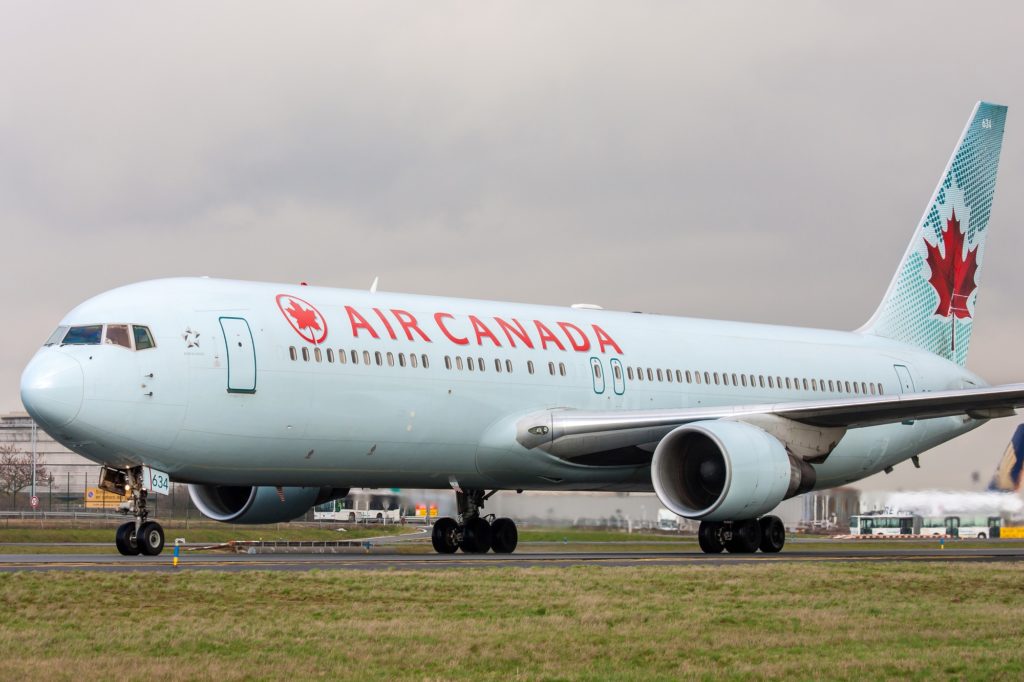Business
3 important facts to know about Canadian airline industry
The Canadian airline industry has been volatile due to various factors such as fuel costs and salaries, making it a speculative play for investors.

Over the past decade, the airline industry in Canada has long been dominated by two main carriers: WestJet and Air Canada. From recessions to economic peaks, these airlines have been chugging along, surviving and adapting. Had investors invested in Air Canada five years ago, they would have been rewarded with more than a quadrupling of value (based on Oct. 31 price of about $24.98 and the price on Nov. 1, 2013, at $5.88, prices are in CDN). Investors who took a gamble on WestJet five years ago would have seen their value dwindle from its Oct 31. price of $19.18 from $27.43 on Nov. 1, 2013. It is a speculative play investing in Canadian airlines.
There are a couple reasons why the Canadian airline industry is so volatile:
- Aircraft fuel costs play a huge role in the airline’s bottom line
- The unions are driving up costs among the main airlines
- Discount airlines are taking up a bigger piece of the budget airline space
The fluctuations of gas prices have an indirect effect on airlines. It is a large variable cost for Air Canada and WestJet:
| Air Canada | WestJet | |
| Fuel Costs | $ 1,222,000,000 | $ 343,276,000 |
| Total Expenses | $ 4,575,000,000 | $ 1,182,727,000 |
| % of Total | 26.7% | 29.0% |
For Air Canada, aircraft fuel costs make up 26.7 percent of its total operating expenses. For WestJet, it is 29.0 percent. As gas price edges up in the future, this will make both airlines’ cost structure increase as well. What it comes down to then is which airline can operate a more efficient fleet.
Unions also play a big role for airlines. Recent union strikes in WestJet had disrupted its service for two weeks resulting in a loss of sales and profit:
| Air Canada | WestJet | |
| Salaries and Benefits | $ 743,000,000 | $ 249,733,000 |
| Total Expenses | $ 4,575,000,000 | $ 1,182,727,000 |
| % of Total | 16.2% | 21.1% |
For WestJet where its union had recently unionized, this elevates its risk profile and makes its cost structure less competitive, where years ago, it marketed itself as a low-cost, no-frills type airline. In total, WestJet fuel costs and salaries make up slightly over 50 percent of its costs while for Air Canada, this ratio is only 43 percent.
Investors thinking of investing in either Air Canada and WestJet should be mindful of these two big cost items. In the past two years, low-cost airline competition has intensified as a number of budget airlines have entered the fray:
- Flair Airlines
- Wow Air
- Primera Air
- Jetlines
- Swoop (Westjet’s low-cost airline)
Jetlines is a relatively newcomer to the TSX. It had its IPO in 2017. These airlines only fly a small number of planes on only a few routes. But it has been reported that once these routes have been served by a budget airline, these routes see a drastic cut in price. This is good for consumers, but it is a dent to the bottom line for WestJet and Air Canada.
Overall, the Canadian airline industry has several new regional fliers and this will erode profits for everyone. Also, with aircraft fuel costs and salaries/benefits being a huge expense item, it is a burden for the airline carriers to bear. These factors together make any player in the airline industry a speculative play.
(Featured image by DepositPhotos)
—
DISCLAIMER: This article expresses my own ideas and opinions. Any information I have shared are from sources that I believe to be reliable and accurate. I did not receive any financial compensation for writing this post, nor do I own any shares in any company I’ve mentioned. I encourage any reader to do their own diligent research first before making any investment decisions.

-

 Markets1 week ago
Markets1 week agoCocoa Prices Drop Amid Speculative Selling and West African Supply Concerns
-

 Cannabis6 days ago
Cannabis6 days agoIs Aurora Cannabis Stock a Risk Worth Taking?
-

 Impact Investing2 weeks ago
Impact Investing2 weeks agoEU Eases CO2 Tax Burden on SMEs with Revised CBAM Rules
-

 Fintech14 hours ago
Fintech14 hours agoRobinhood Expands to Europe with Tokenized Stocks and Perpetual Futures

























You must be logged in to post a comment Login